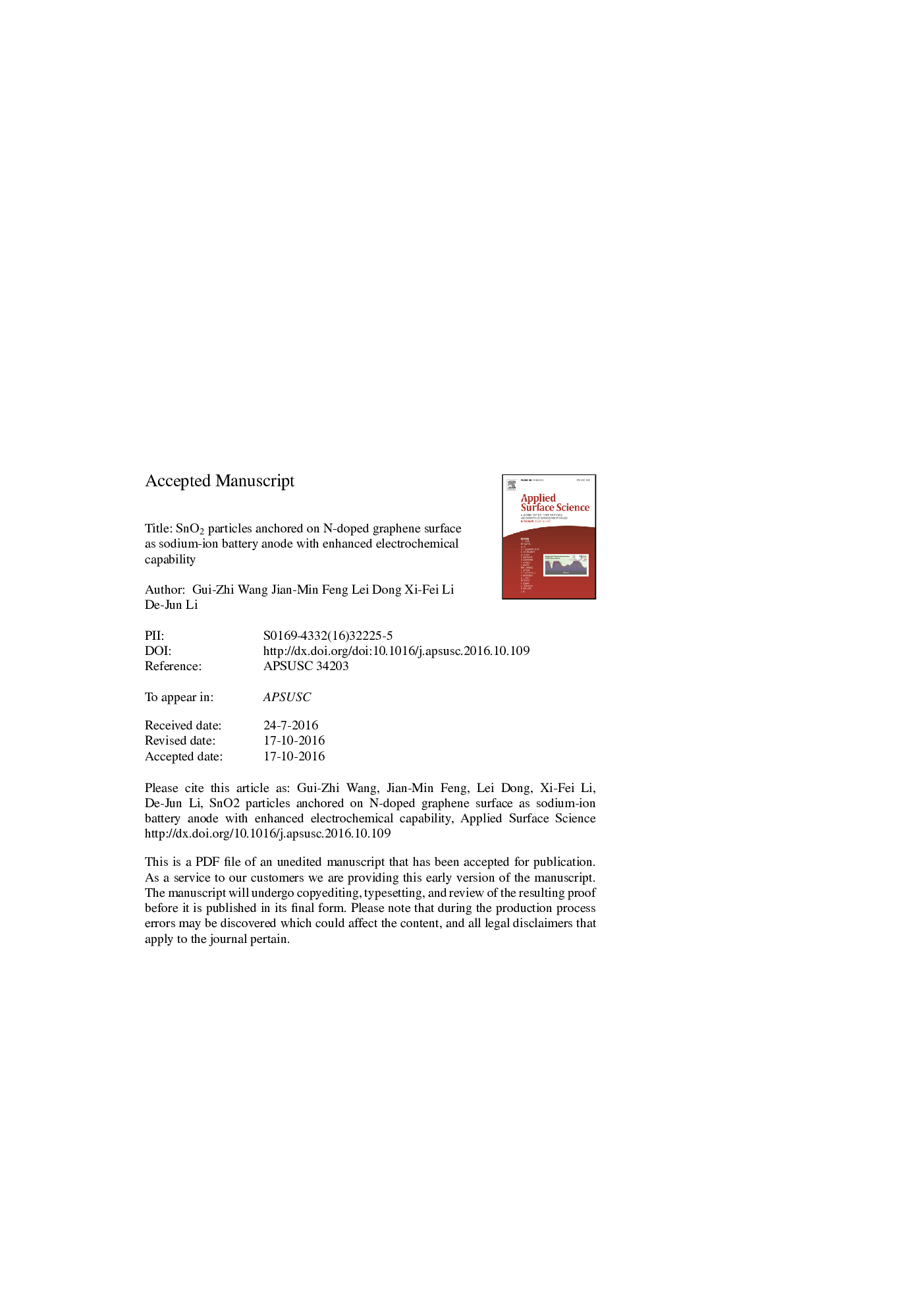| Article ID | Journal | Published Year | Pages | File Type |
|---|---|---|---|---|
| 5352704 | Applied Surface Science | 2017 | 30 Pages |
Abstract
The small-size SnO2 particles uniformly dispersed on the nitrogen doping graphene nanocomposites (SnO2-N-GNS) have been successfully synthesized by a mild hydrothermal method with the precursors of graphene oxide, urea and SnCl4.5H2O. The phase (XRD, EDX and XPS) and morphology (SEM, TEM) analysis further confirm the obtained products. When the composite served as anode material in sodium ion batteries (SIBs), it delivers superior sodium storage performance with reversible discharge capacity of 294.4 mAh gâ1 at a current density of 50 mA gâ1 in the voltage range from 0.01-3 V after 50 discharge/charge cycles, which is much higher than that of SnO2-GNS (182.9 mAh gâ1) and N-GNS (114.9 mAh gâ1). Besides, the SnO2-N-GNS electrode also exhibits admirable rate stability with the discharge capacity of 206 mAh gâ1 even at 800 mA gâ1. More importantly, the SnO2-N-GNS shows lower internal resistance and larger sodium-ion diffusion coefficient. These enhanced electrochemical performances of SnO2-N-GNS are due to the N-doping defects and the homogeneous dispersion of SnO2 particles.
Related Topics
Physical Sciences and Engineering
Chemistry
Physical and Theoretical Chemistry
Authors
Gui-Zhi Wang, Jian-Min Feng, Lei Dong, Xi-Fei Li, De-Jun Li,
